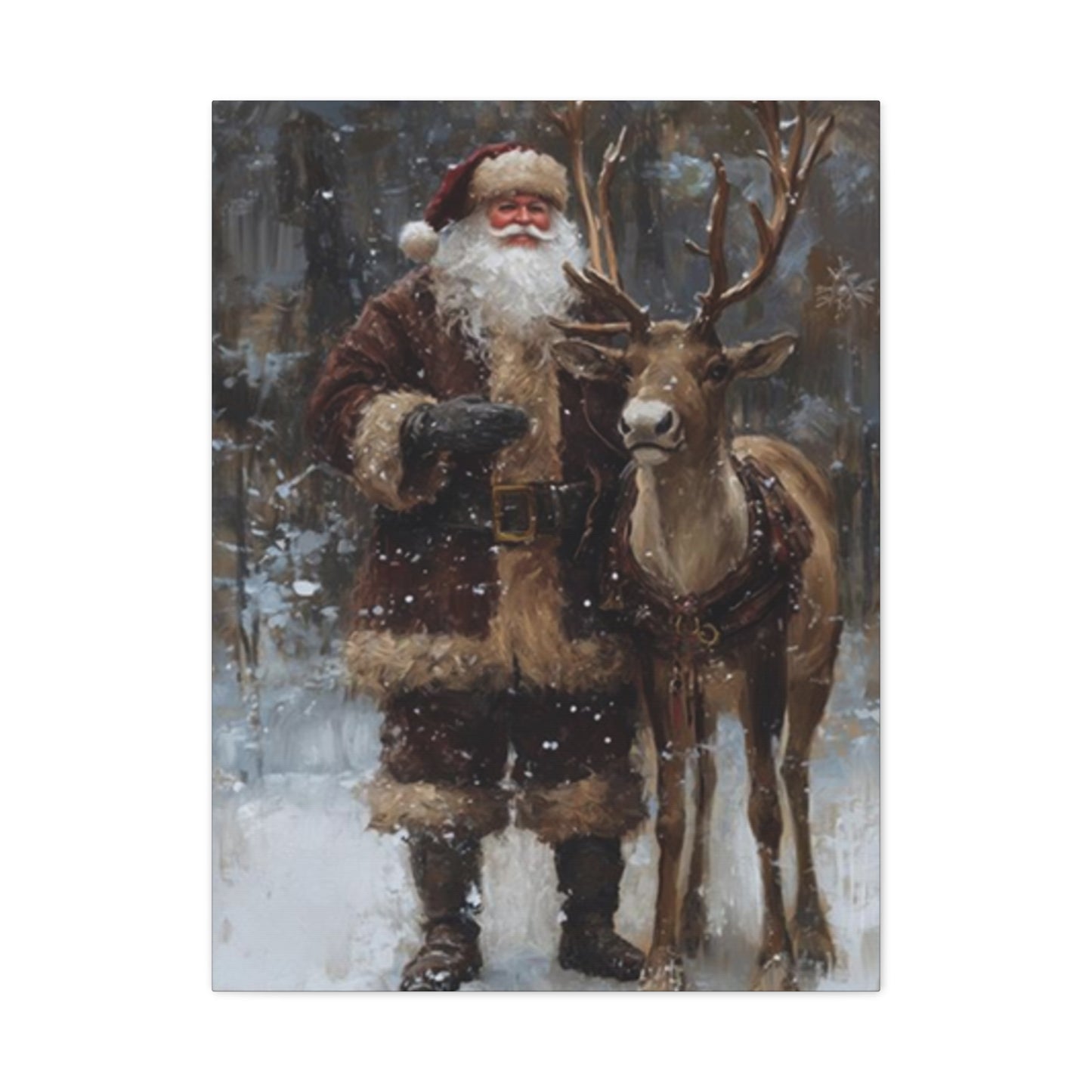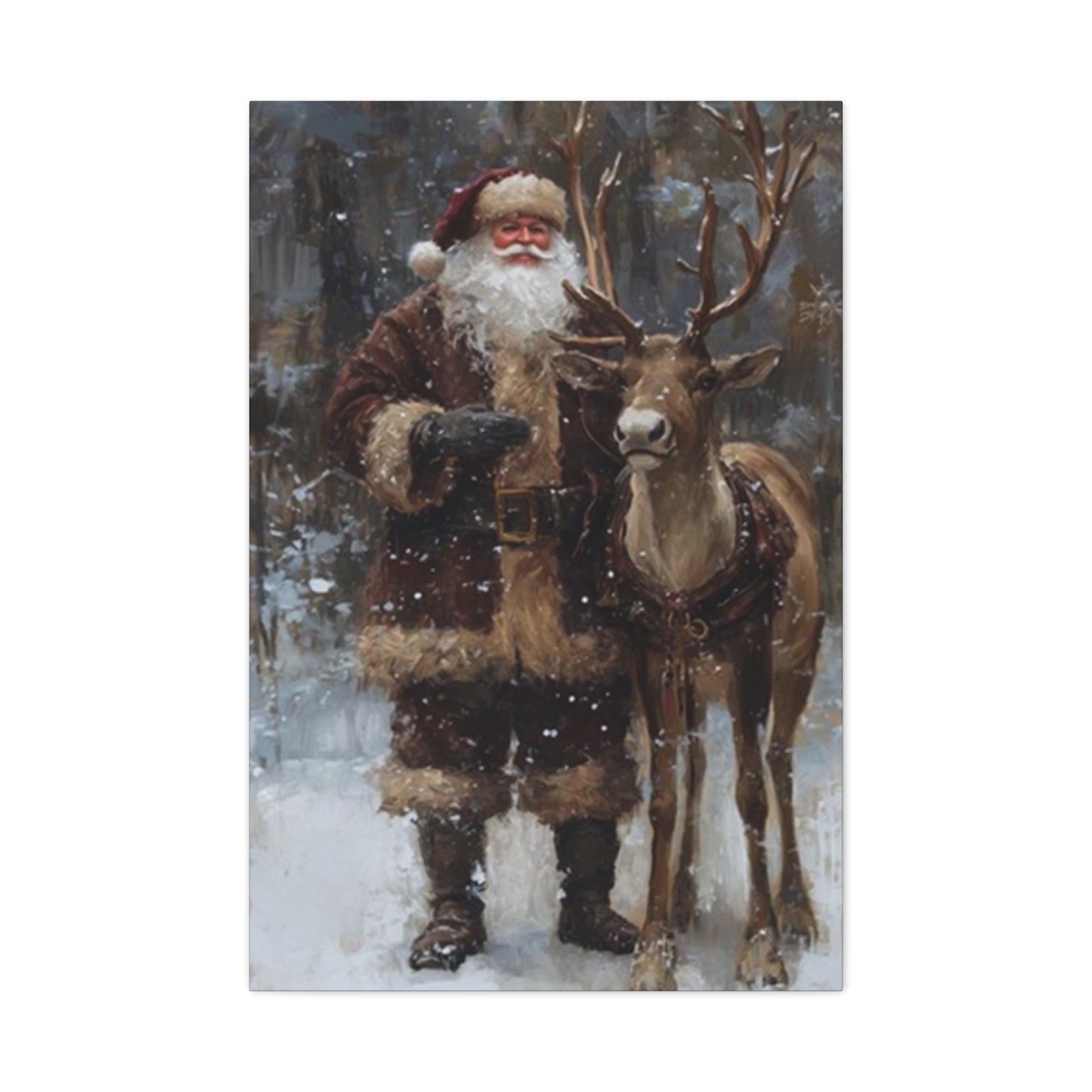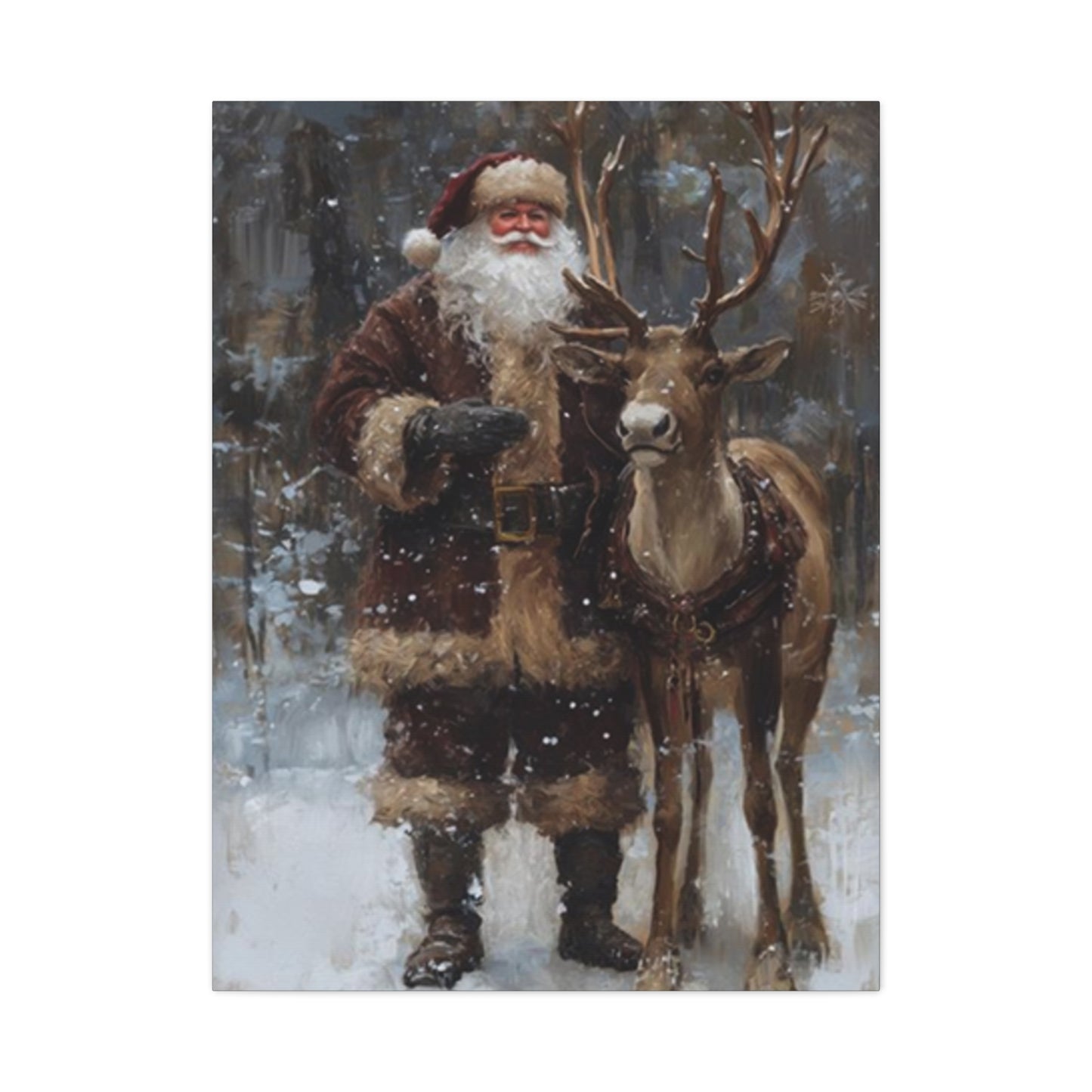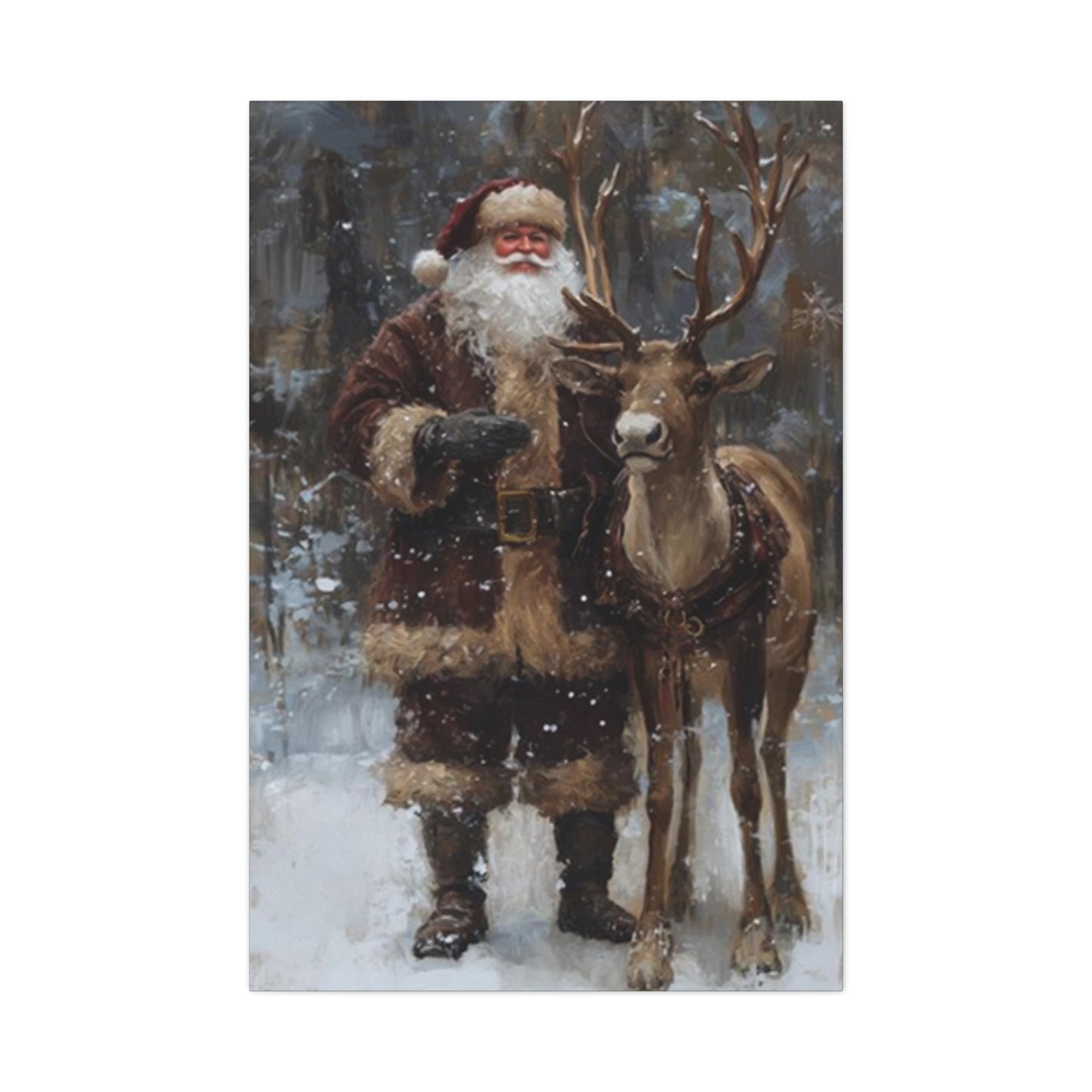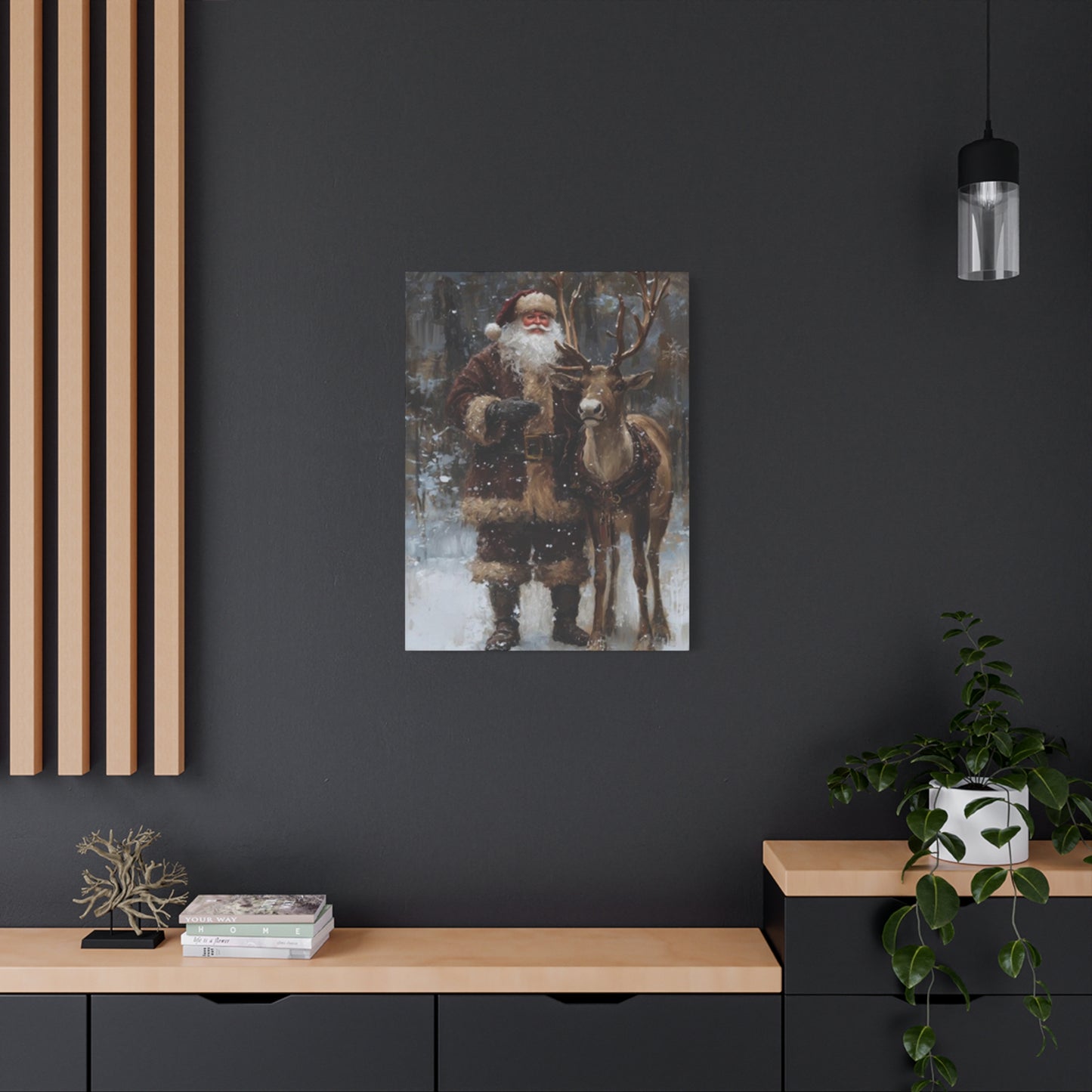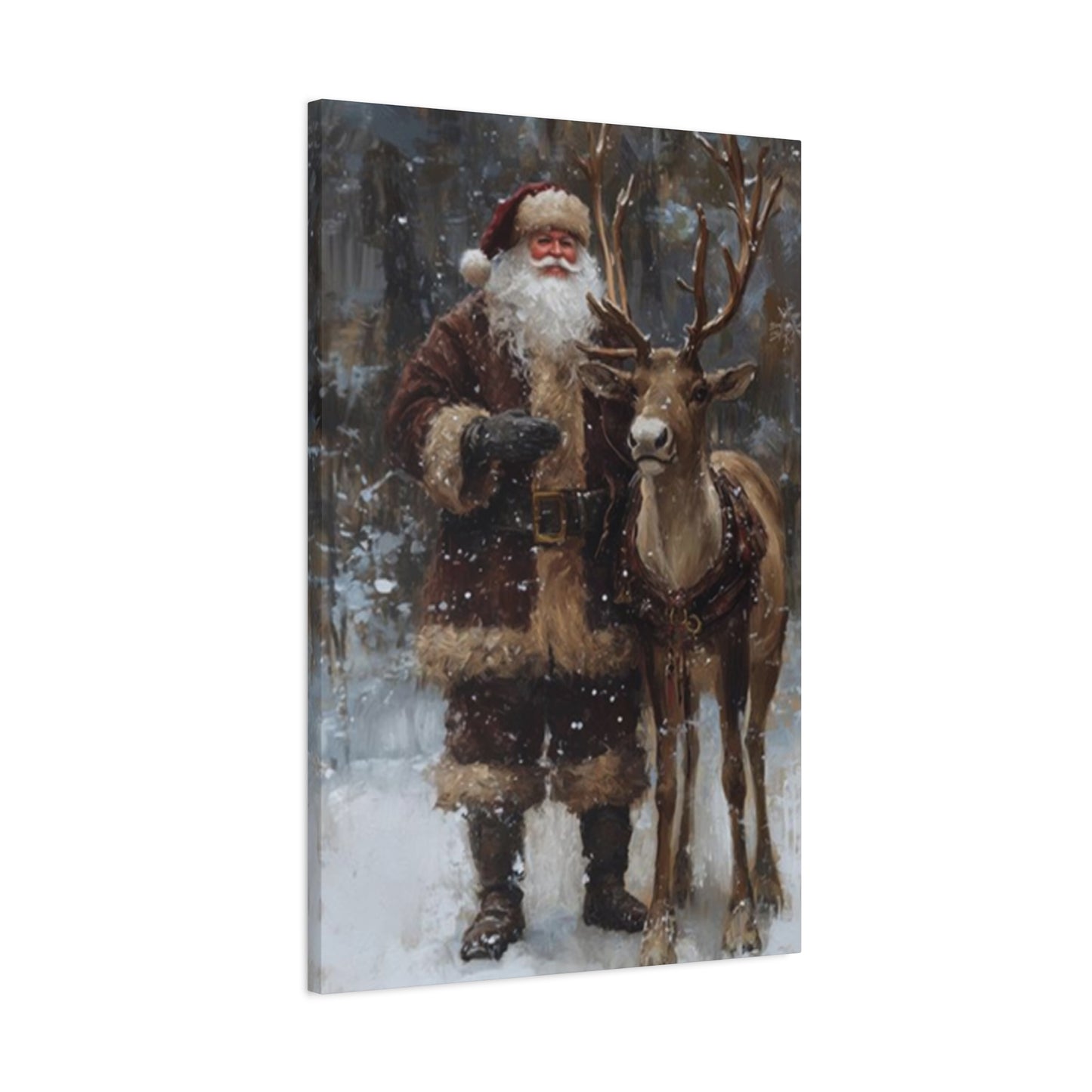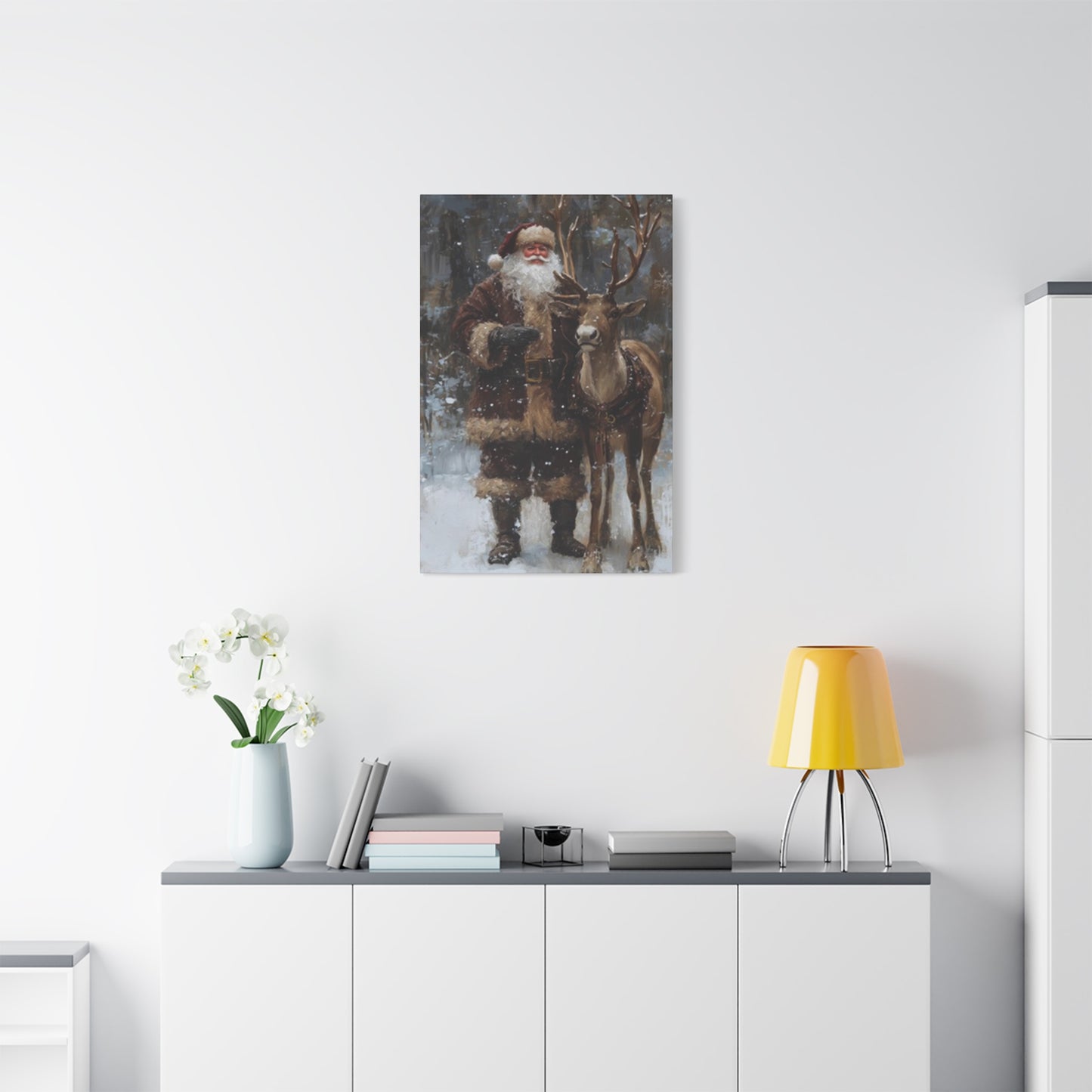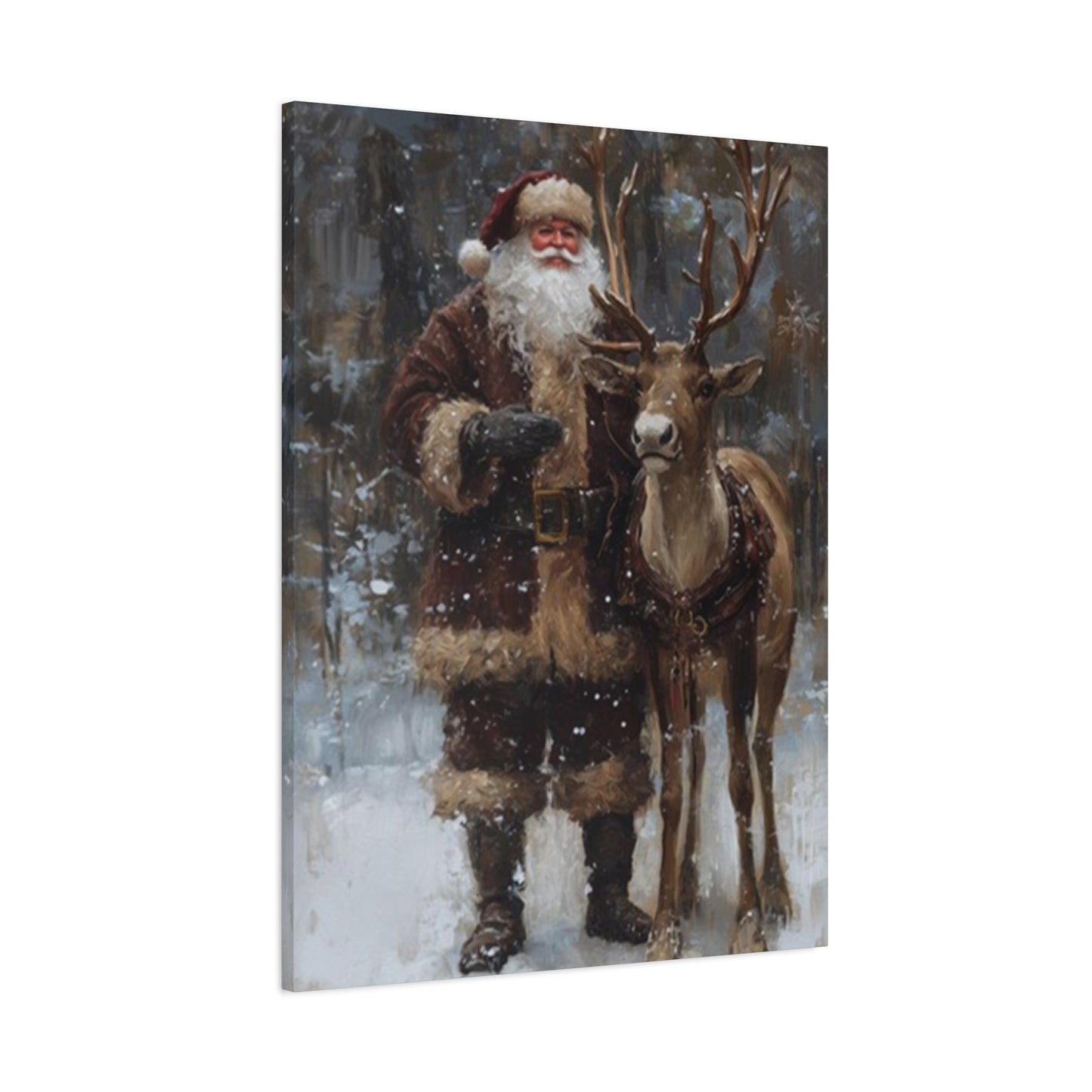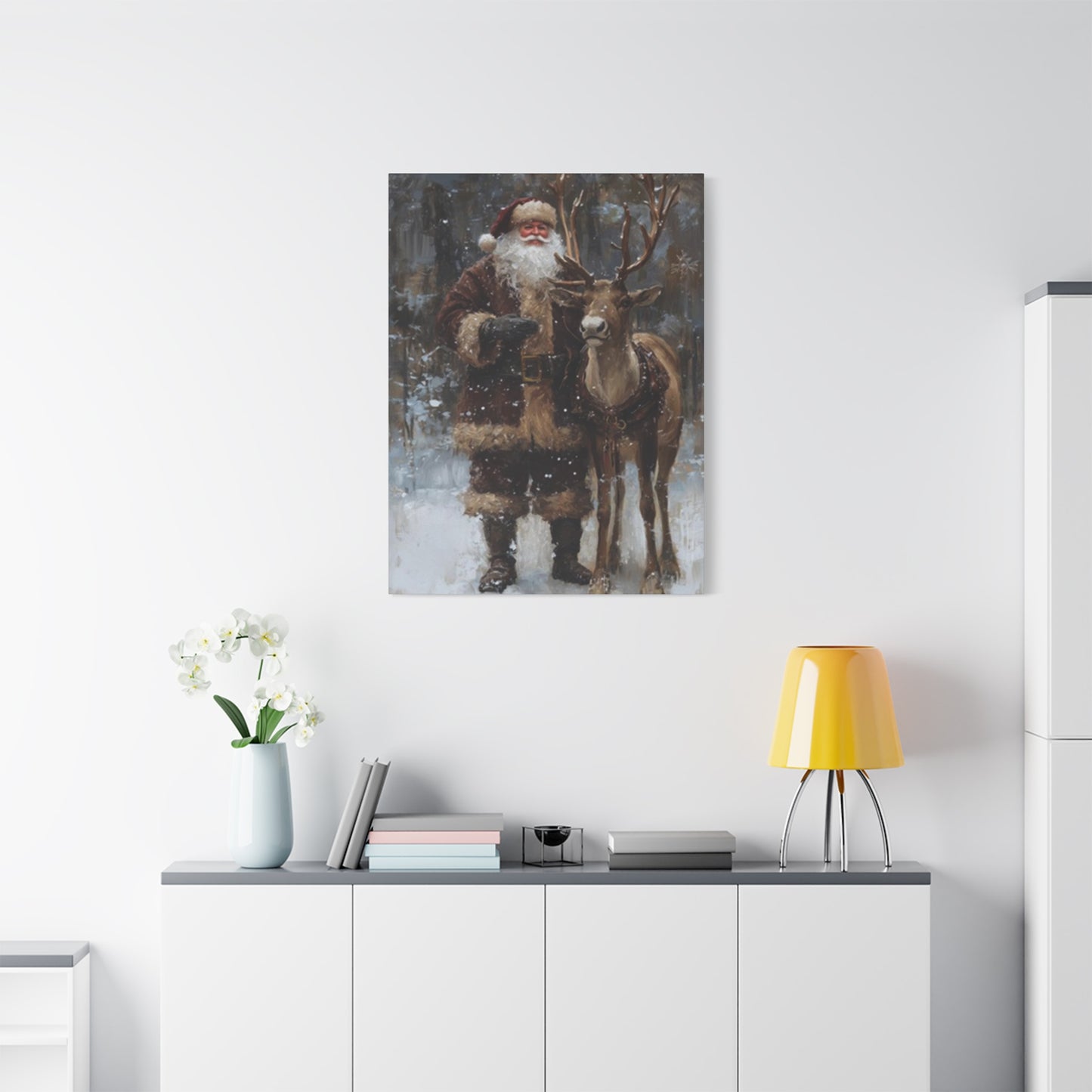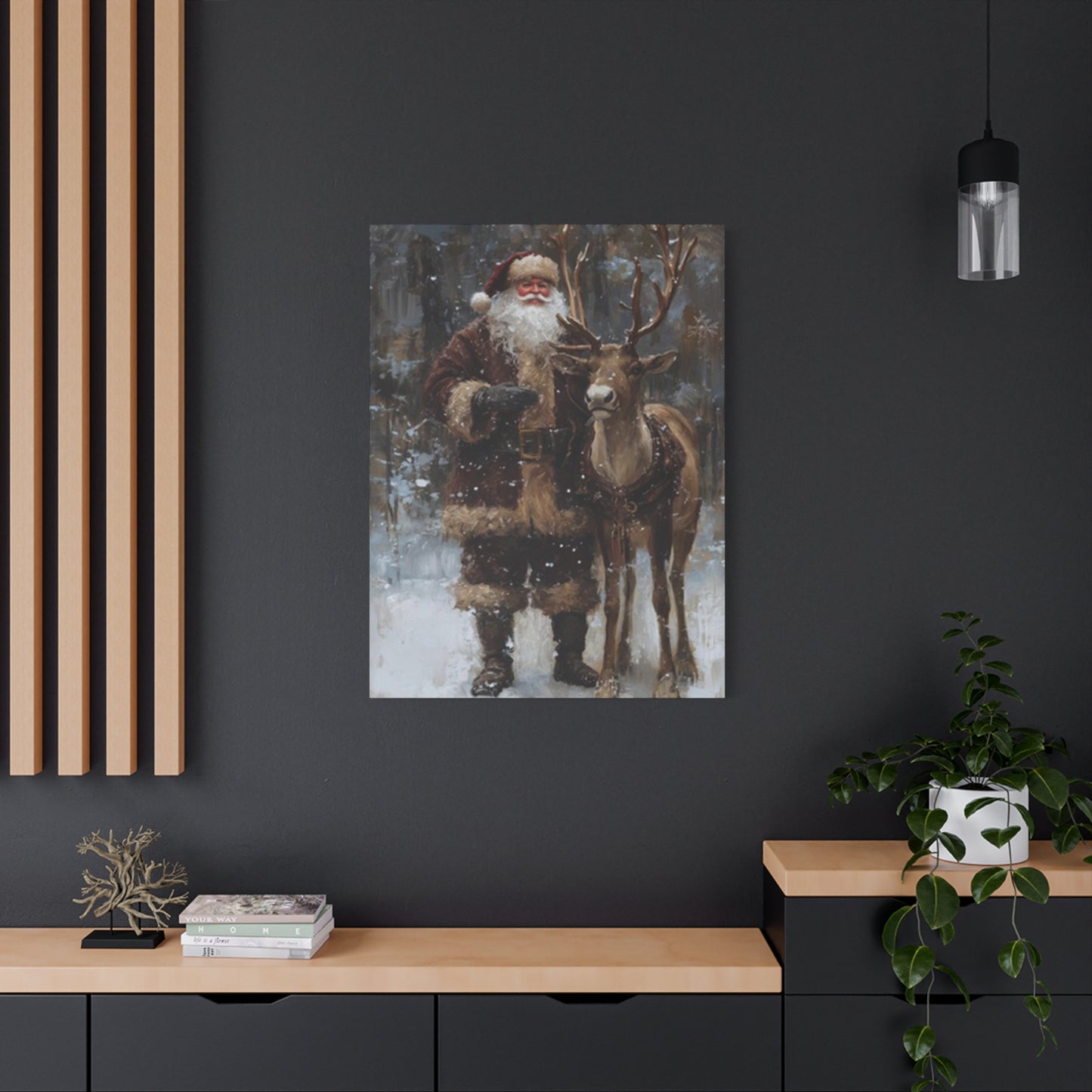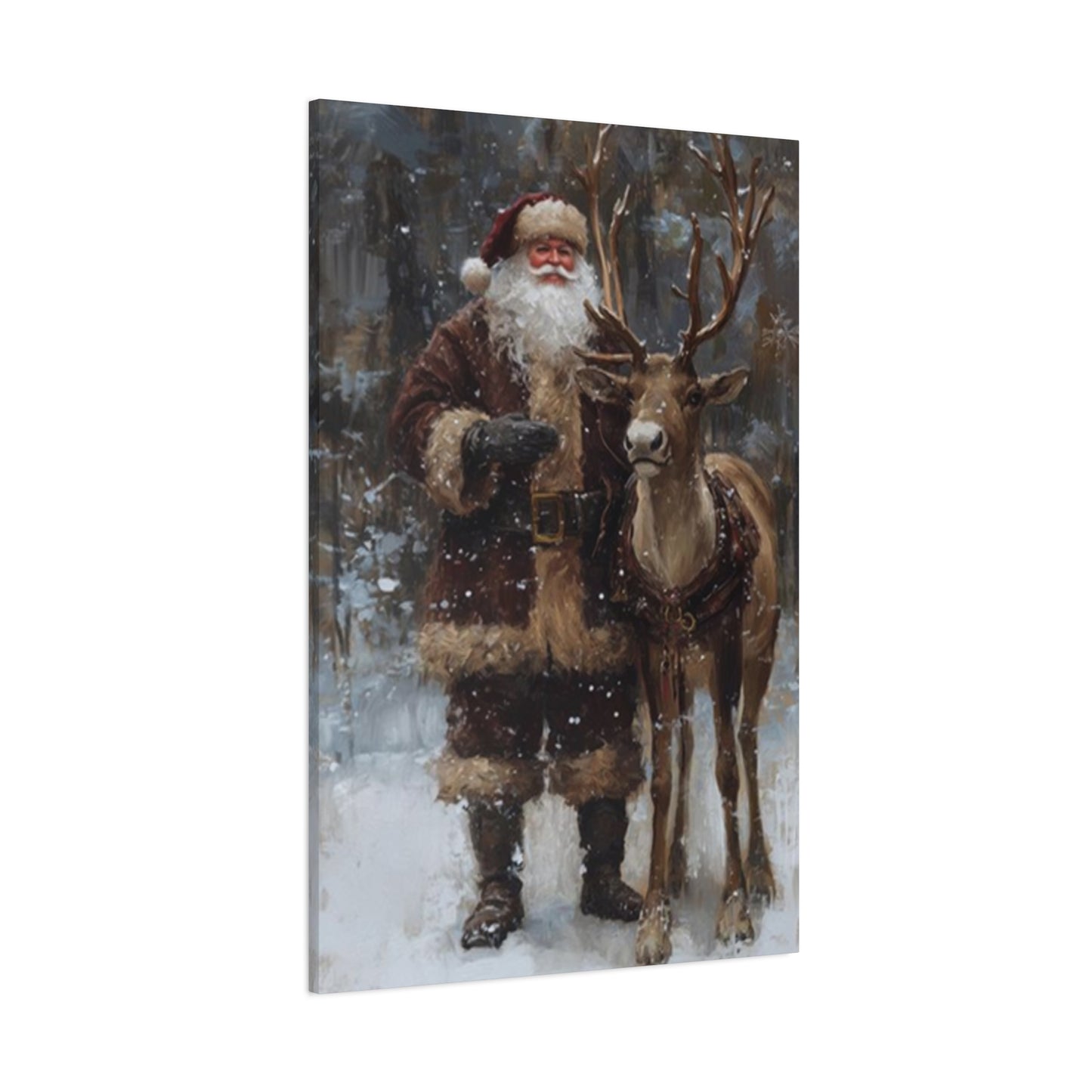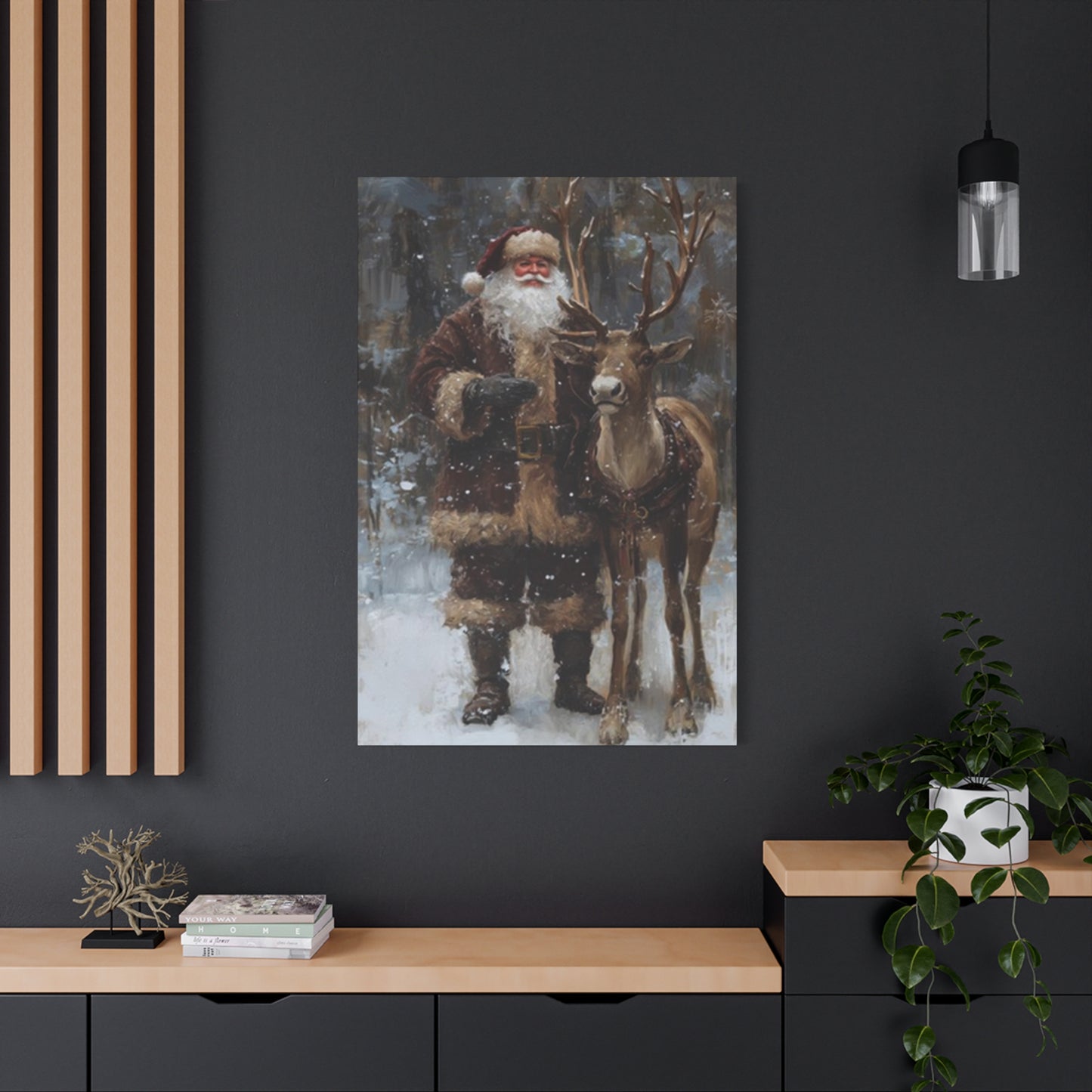Santa and Reindeer in Motion: A Complete Guide to Christmas Photo Wall Art
The enchanting imagery of Santa Claus soaring through winter skies alongside his faithful reindeer companions has captivated hearts and imaginations for generations. These timeless scenes represent more than just holiday decoration; they embody the spirit of wonder, generosity, and magic that defines the Christmas season. Photography art featuring Santa and his reindeer in motion captures fleeting moments of holiday enchantment, transforming them into lasting treasures that bring warmth and joy to homes throughout the year. The art of capturing these magical moments requires skill, creativity, and a deep understanding of what makes Christmas imagery truly special. Whether displayed in living rooms, bedrooms, hallways, or offices, these photographic prints serve as daily reminders of childhood wonder and the timeless traditions that connect families across generations.
Capturing the Spirit of Christmas Through Motion Photography
The artistry involved in photographing Santa and his reindeer in motion represents a unique challenge that combines technical expertise with creative vision. Unlike static holiday portraits, motion photography aims to freeze dynamic moments that tell stories of adventure, journey, and magical flight. Photographers who specialize in this genre understand that the key to creating compelling images lies in their ability to convey movement while maintaining clarity and emotional impact. The technical aspects include managing shutter speeds to either freeze action completely or introduce intentional blur that suggests velocity and energy. Lighting plays a crucial role, particularly when working with winter scenes where snow reflects moonlight and creates ethereal atmospheres. Composition becomes paramount as photographers must balance multiple elements including the figures of Santa and his reindeer, the sleigh laden with presents, architectural elements like rooftops and chimneys, and atmospheric conditions such as falling snow or starlit skies. The best motion photography in this genre manages to transport viewers directly into the scene, allowing them to feel the rush of cold air, hear the jingle of sleigh bells, and experience the thrill of magical flight alongside these beloved characters.
Understanding the Cultural Significance of Holiday Photography
Christmas photography featuring Santa and his reindeer connects deeply with cultural traditions that span continents and centuries. These images draw from folklore, literature, poetry, and commercial imagery that has evolved over time to create the modern conception of Santa Claus and his Arctic workshop. The reindeer themselves carry symbolic meaning beyond their practical role as sleigh pullers; they represent the wild beauty of northern regions, the harmony between humans and nature, and the idea that magical beings can accomplish impossible feats when working together. Photography that captures these elements taps into collective memories and shared cultural experiences that transcend individual backgrounds.
Families who display such imagery in their homes participate in a broader tradition of celebrating Christmas through visual art, creating environments that foster connection, conversation, and contemplation. The photographs serve as conversation starters, particularly for children who gaze at them with wonder and ask questions about Santa's journey, how reindeer fly, and what happens on Christmas Eve. For adults, these images can evoke nostalgia for their own childhoods while simultaneously helping them create new memories with their own families. The cultural weight carried by these photographs makes them more than mere decorations; they become artifacts of belief, tradition, and the human desire to preserve magic in an increasingly rational world.
Selecting the Perfect Photography Style for Your Space
When choosing Christmas photography art featuring Santa and his reindeer, understanding different photographic styles helps ensure selections complement existing décor while achieving desired emotional effects. Traditional photography approaches favor realistic portrayals that aim to document what Santa's journey might actually look like if witnessed firsthand. These images typically feature natural lighting, authentic costumes and props, and settings that feel genuine rather than staged. The realism in such photographs appeals to those who appreciate documentary-style artistry and want their holiday décor to feel grounded and believable. Alternatively, stylized photography embraces creative manipulation, dramatic lighting, and artistic interpretation to produce images that feel more fantastical and dreamlike.
These photographs might incorporate enhanced colors, surreal compositions, or digital effects that heighten the magical quality of the subject matter. Some photography styles lean toward vintage aesthetics, using sepia tones, grain, and composition techniques that evoke early twentieth-century imagery, connecting contemporary celebrations with historical traditions. Modern approaches might embrace minimalism, focusing tightly on specific details like the gleam in a reindeer's eye or the texture of Santa's glove against leather reins. Abstract interpretations use motion blur, unusual angles, and creative cropping to suggest movement and energy rather than depicting literal scenes. Understanding these stylistic options allows homeowners to select pieces that resonate with their personal aesthetic preferences while considering factors like room size, existing color schemes, lighting conditions, and the overall atmosphere they wish to create during the holiday season and beyond.
Mastery Behind Winter Flight Photography
Creating stunning photographs of Santa and reindeer in flight requires photographers to master numerous technical challenges unique to this genre. Lighting in winter environments presents particular difficulties as the low angle of winter sun, combined with reflective snow surfaces, creates extreme contrast situations that cameras struggle to capture properly. Photographers must skillfully manage exposure to retain detail in both bright highlights and deep shadows, often employing graduated filters, flash fill, or high dynamic range techniques to achieve balanced results. Capturing motion requires precise shutter speed calculations; too fast and the image appears frozen and lifeless, too slow and critical details dissolve into blur. The ideal shutter speed depends on the desired effect, the speed of movement, and the focal length of the lens being used.
Focusing systems must track moving subjects accurately, a challenge when photographing scenes that may involve live animals, actors in costume, or elaborately staged sets with multiple elements at varying distances. Depth of field considerations become crucial as photographers decide whether to isolate their subjects against blurred backgrounds or maintain sharpness throughout the scene to showcase environmental details. Weather conditions during winter shoots can be unpredictable and harsh, requiring photographers to protect sensitive equipment from moisture, cold, and condensation while maintaining their own comfort and safety. Post-processing workflows for these images often involve careful adjustments to white balance, color saturation, contrast, and clarity to ensure the final prints accurately reflect the photographer's vision and reproduce beautifully when printed on various media and displayed under different lighting conditions in homes.
Creating Atmospheric Depth in Holiday Photography
The most memorable Christmas photography featuring Santa and his reindeer achieves a sense of atmospheric depth that draws viewers into the scene and makes them feel like participants rather than observers. This quality emerges from thoughtful attention to foreground, middle ground, and background elements that work together to create dimensional space. Foreground details might include snowflakes caught mid-fall, the edge of a rooftop, or pine branches that frame the main subject and provide visual entry points into the image. The middle ground typically contains the primary focus, whether that be Santa in his sleigh, reindeer in mid-stride, or the interaction between these central characters. Background elements establish context and mood through the inclusion of moonlit skies, distant landscapes, twinkling village lights, or aurora borealis displays that add magic without competing with the main subject.
Atmospheric perspective, where distant elements appear hazier and less saturated than nearby objects, helps reinforce the sense of depth and scale. Light sources within the scene, such as the warm glow from Santa's lantern or the luminescence of stars, create visual interest and guide the viewer's eye through the composition. Fog, mist, or blowing snow can serve as natural diffusion elements that add mystery and romance while also helping to separate spatial planes. The interplay of warm and cool color temperatures contributes to atmospheric quality, with the cold blues of winter night contrasting against the warm oranges and yellows of artificial lights or firelight. When all these elements combine successfully, the resulting photograph transcends its two-dimensional limitations and creates an immersive experience that captivates viewers and rewards repeated viewing with newly discovered details and nuances.
The Emotional Resonance of Santa and Reindeer Imagery
Photographs depicting Santa and his reindeer carry profound emotional weight that extends far beyond their surface beauty, tapping into deeply held beliefs, memories, and associations formed during childhood. For many people, these images represent the embodiment of generosity, as Santa symbolizes the spirit of giving without expectation of return. The dedication required for his mythical journey, visiting every home in a single night, speaks to themes of commitment, responsibility, and care for others that resonate regardless of religious or cultural background. The reindeer themselves evoke feelings of companionship, loyalty, and the power of teamwork, as they work in harmony to accomplish an impossible task. Together, Santa and his reindeer represent the triumph of good over logistics, magic over mundane reality, and hope over cynicism.
Viewing photography that captures these figures in motion can trigger nostalgia, transporting adults back to nights spent listening for hoofbeats on the roof or trying to catch a glimpse of the sleigh through windows. For children, these images validate their beliefs and feed their imaginations, providing visual confirmation of stories they have heard and encouraging them to maintain wonder in a world that often seems designed to eliminate it. The emotional impact of such photography explains why families return to these images year after year, why certain prints become treasured possessions passed down through generations, and why even those who do not celebrate Christmas in a religious context often embrace these secular symbols of the season. The feelings evoked by well-crafted Santa and reindeer photography, ranging from joy and excitement to peace and contentment, make these pieces powerful tools for creating the emotional atmosphere families desire in their homes during the holidays and throughout the year.
Choosing Materials and Printing Methods for Longevity
The transformation of digital photographs into physical art pieces suitable for home display involves critical decisions about materials and printing methods that dramatically affect the final result's appearance, durability, and impact. Canvas prints offer a traditional artistic quality with visible texture that adds dimension and eliminates glare, making them ideal for spaces with challenging lighting conditions. The fabric surface of canvas softens fine details slightly while enhancing the painterly qualities of images, particularly those with impressionistic or vintage styling. Canvas prints typically arrive gallery-wrapped around wooden frames, creating depth and eliminating the need for additional framing, though floating frames can be added for enhanced presentation. Metal prints represent a modern alternative that produces images of exceptional clarity, vibrant color, and remarkable durability. The dye-sublimation process used for metal printing infuses inks directly into specially coated aluminum panels, creating scratch-resistant, waterproof pieces that maintain their brilliance for decades.
The high-gloss finish of metal prints intensifies colors and creates dramatic visual impact, though matte metal options are available for those who prefer subtler presentations. Acrylic prints sandwich photographs between clear acrylic panels, creating depth and luminosity that makes images appear to glow from within. This premium option offers museum-quality presentation with colors that appear more saturated and vivid than almost any other medium. Traditional photographic prints on paper remain popular, especially when paired with quality framing and matting. Archival papers and pigment-based inks ensure these prints resist fading and discoloration for generations when properly displayed away from direct sunlight. Factors influencing material selection include the display environment's lighting conditions, humidity levels, the desired aesthetic effect, budget considerations, and whether the piece will be permanent décor or seasonal rotation. Understanding these options empowers buyers to make informed decisions that ensure their Christmas photography art remains beautiful and impactful for years to come.
Christmas Photography Into Existing Home Décor
Successfully incorporating Santa and reindeer photography into established interior design schemes requires thoughtful consideration of color relationships, scale proportions, and stylistic harmony. The traditional red and green color palette associated with Christmas can clash with modern neutral schemes or specific color-coordinated rooms, making it essential to select photography that either complements existing colors or deliberately contrasts in ways that feel intentional rather than accidental. Black and white Christmas photography offers versatile neutrality that integrates seamlessly with virtually any color scheme while providing dramatic visual impact and timeless elegance. Sepia-toned or desaturated images bridge the gap between full color and monochrome, offering warm nostalgic qualities that work particularly well in spaces decorated with natural woods, earth tones, and vintage elements.
For homes with bold contemporary color palettes, seeking Christmas photography that incorporates unexpected hues or focuses on the blue tones of winter twilight rather than traditional holiday colors can create cohesion. Scale considerations are equally important; oversized prints make bold statements and serve as focal points in large rooms with high ceilings, while smaller prints work better in intimate spaces or as part of gallery wall arrangements. The photography's compositional qualities should relate to the room's architectural features, with horizontal images complementing wide wall spaces above sofas or beds, while vertical compositions suit narrow walls flanking windows or doorways.
Framing choices significantly impact how Christmas photography integrates with surrounding décor, with sleek modern frames supporting contemporary aesthetics, ornate traditional frames enhancing classic interiors, and rustic wood frames complementing farmhouse or cabin styles. Creating visual dialogue between Christmas photography and other displayed art through shared color notes, stylistic similarities, or complementary subject matter helps new pieces feel like intentional additions rather than afterthoughts. Lighting dedicated to highlighting Christmas photography, whether through picture lights, track lighting, or strategic placement near natural light sources, ensures these pieces receive the attention they deserve while contributing to the room's overall ambiance.
Holiday Decoration Through Photography
The decision to display Christmas photography featuring Santa and his reindeer reflects deeper psychological needs and desires that extend beyond simple aesthetic preferences. Humans are visual creatures who derive comfort, inspiration, and emotional regulation from their physical environments. The images we choose to surround ourselves with communicate our values, shape our moods, and influence our mental states in subtle but significant ways. Holiday photography serves multiple psychological functions, beginning with its role in creating what environmental psychologists call place attachment, the emotional bond people form with specific locations. By decorating homes with meaningful imagery, families transform generic living spaces into personalized sanctuaries that reflect their identities and priorities. Christmas photography specifically activates associations with positive experiences, cherished memories, and hopeful anticipation of future celebrations, all of which contribute to emotional wellbeing.
The presence of these images provides visual anchors that help establish and maintain holiday traditions, giving family members shared reference points for yearly rituals and creating continuity across time. For children, holiday photography validates belief systems and provides tangible evidence of magical narratives that play crucial roles in imaginative development. The psychological concept of environmental enrichment suggests that visually interesting, personally meaningful surroundings promote mental health by reducing stress, encouraging positive thinking, and providing mental stimulation. Holiday photography contributes to this enrichment while also serving territorial functions, marking the home as a space where certain values, traditions, and celebrations are honored and maintained. The cyclical nature of holiday decorating, including the display and storage of Christmas photography, creates rhythm and structure in yearly cycles, providing psychological benefits associated with ritual and routine. Understanding these deeper motivations helps explain why people invest time, money, and emotional energy into selecting and displaying Christmas photography, and why certain images become beloved fixtures that families refuse to replace despite changing design trends.
Exploring Different Compositional Approaches in Holiday Photography
The arrangement of visual elements within the photographic frame dramatically affects how viewers perceive and emotionally respond to Christmas imagery of Santa and his reindeer. Compositional techniques rooted in centuries of visual art tradition guide photographers in creating balanced, engaging, and emotionally resonant images. The rule of thirds, which divides the frame into a three-by-three grid, suggests placing key elements along these lines or at their intersections rather than in the center, creating dynamic tension and visual interest. Many compelling Santa and reindeer photographs position the sleigh along a diagonal line that leads the eye from one corner toward another, suggesting movement and direction while maximizing compositional energy. Leading lines, such as the trail of the sleigh through the sky, the angle of rooftops, or the direction of falling snow, guide viewers' eyes through the image and toward focal points. Framing techniques use natural or architectural elements like tree branches, window frames, or doorways to surround the main subject, creating depth and focusing attention.
Negative space, the empty or less detailed areas surrounding subjects, provides visual rest and emphasizes the importance of primary elements; a small sleigh against a vast starry sky conveys solitude and the magnitude of Santa's journey. Symmetrical compositions create formality and calm, while asymmetrical arrangements feel more dynamic and contemporary. Photographers might employ the golden ratio, a mathematical relationship found throughout nature that creates innately pleasing proportions when applied to image composition. Color blocking groups similar hues together to create visual impact and guide attention, such as clustering warm lights of villages against cool winter blues. Layering multiple planes of depth, with clear foreground, middle ground, and background elements, creates dimensional richness that invites extended viewing. Understanding these compositional principles helps buyers evaluate Christmas photography more critically and select pieces that effectively communicate desired feelings and stories through sophisticated visual language.
The Role of Color Theory in Christmas Photography
Color relationships within Christmas photography profoundly influence the emotional tone and visual impact of images featuring Santa and his reindeer. Understanding color theory illuminates why certain photographs resonate more powerfully than others and helps buyers select pieces that will create desired atmospheres in their homes. Complementary color schemes pair opposites on the color wheel, such as the red of Santa's suit against winter's blue-green tones, creating vibrant visual tension and maximum contrast that attracts attention and energizes spaces. Analogous color schemes use colors adjacent on the wheel, like blues, purples, and blue-greens in twilight scenes, producing harmonious, calming effects perfect for bedrooms or meditation spaces. Warm color palettes dominated by reds, oranges, and yellows evoke feelings of coziness, excitement, and emotional warmth, making them popular choices for family gathering spaces. Cool color schemes featuring blues, greens, and purples convey serenity, expansiveness, and the crisp quality of winter air.
Color temperature, the relative warmth or coolness of hues, creates depth when varied within a single image; warm foreground elements appear closer while cool backgrounds recede, enhancing three-dimensional effects. Saturation levels affect emotional intensity, with highly saturated colors creating drama and energy while desaturated tones feel more sophisticated and subtle. Value contrast, the relationship between light and dark elements, establishes focal points and guides visual flow; the eye naturally moves toward areas of highest contrast. Psychological color associations influence perception, with red stimulating excitement and passion, blue promoting calm and trust, green suggesting growth and harmony, and white evoking purity and possibility. Cultural color meanings add additional layers; while Western traditions strongly associate red and green with Christmas, other cultures might have different relationships with these hues. Seasonal color palettes in Christmas photography often incorporate metallics like gold and silver that add festivity and light reflection. Thoughtful evaluation of color relationships in potential photography purchases ensures selected pieces will create desired moods, complement existing décor, and maintain visual interest through repeated viewing over many seasons.
Seasonal Rotation Strategies for Photography Collections
Many enthusiasts of Christmas photography develop collections that evolve over time, necessitating thoughtful strategies for display rotation, storage, and preservation. Seasonal rotation allows homeowners to refresh their environments throughout the year while protecting special holiday pieces from constant exposure that could lead to fading or damage. A well-organized rotation system begins with proper inventory management, cataloging each piece with photographs, dimensions, and condition notes that facilitate planning and ensure nothing is forgotten in storage. Storage solutions should protect photography from the primary threats of light exposure, humidity fluctuations, physical damage, and pest intrusion. Acid-free boxes or archival storage containers maintain stable environments while protecting against dust and light. Climate-controlled storage areas, whether dedicated closets, spare rooms, or off-site facilities, prevent the moisture and temperature extremes that cause warping, mold growth, and adhesive failure. When storing framed pieces, positioning them vertically rather than stacking horizontally prevents pressure damage to frames and glass.
Wrapping individual pieces in acid-free tissue or bubble wrap provides additional protection during storage and transport. Creating a rotation calendar helps establish when seasonal pieces should be displayed and stored, often beginning Christmas décor installation shortly after Thanksgiving and maintaining it through New Year's or even into early January. Some collectors embrace extended display periods, keeping particularly beloved Christmas photography visible year-round in less prominent locations like home offices or guest bedrooms. Display rotation itself becomes an annual ritual that marks seasonal transitions and builds anticipation for upcoming holidays. Families often involve children in the process, creating opportunities to share stories about each piece and reinforce traditions. Documentation through annual photographs of holiday displays creates a visual archive that captures how decoration approaches evolve over time and preserves memories of family celebrations. Regular inspection during rotation periods allows for early detection of condition issues like frame damage, print fading, or glass deterioration, enabling timely repairs that extend the life of treasured pieces.
Creating Gallery Walls With Holiday Photography
Gallery wall arrangements offer dynamic, visually engaging ways to display multiple pieces of Christmas photography featuring Santa and his reindeer while creating focal points that anchor entire rooms. Successful gallery walls balance unity and variety, maintaining enough consistency to feel cohesive while incorporating sufficient diversity to sustain visual interest. Thematic unity can be achieved through consistent subject matter, ensuring all pieces relate to Santa and his reindeer journey, while allowing variation in specific scenes, compositional approaches, and captured moments. Style consistency, whether through shared color palettes, similar photographic treatments, or coordinated framing choices, helps disparate images function as a unified collection.
Size variation creates visual rhythm and prevents monotony; combining larger anchor pieces with smaller supporting images produces dynamic arrangements that feel intentional rather than haphazard. Geometric arrangements, whether in strict grids or more organic flowing layouts, provide structure and visual order. Grid arrangements work well in contemporary spaces and with collections of uniform frame sizes, creating clean, modern presentations. Salon-style arrangements embrace asymmetry and varied frame sizes, producing traditional, collected-over-time aesthetics. Symmetrical layouts centered around a dominant central piece create formal, balanced presentations suitable for traditional interiors. Linear arrangements placing images in rows work well in hallways or above long furniture pieces like sofas. Spacing between frames significantly impacts the overall effect; closer spacing creates cohesive unified masses while wider spacing emphasizes individual pieces.
A common guideline suggests two to three inches between frames, though this varies based on frame sizes and overall wall dimensions. Planning gallery walls before installation prevents wall damage from trial-and-error hanging. Creating full-scale paper templates and arranging them on the wall allows experimentation without commitment. Measuring and marking placement points ensures accurate installation. Starting with the central or largest piece and working outward helps maintain balance. Hanging all pieces at consistent heights, typically with centers at eye level around fifty-seven to sixty inches from the floor, creates professional results. Lighting gallery walls with dedicated fixtures enhances visual impact and allows photography to remain appreciable during evening hours.
The Evolution of Santa Claus in Visual Culture
Understanding how Santa Claus imagery has evolved through visual culture provides context for appreciating contemporary Christmas photography and recognizing how current representations build upon historical foundations. Early depictions of Santa Claus and his predecessors, including Saint Nicholas, Father Christmas, and various European gift-bringing figures, varied dramatically in appearance and attributes. The modern Santa Claus emerged through a synthesis of cultural traditions, literary descriptions, and artistic interpretations spanning the nineteenth and twentieth centuries. Clement Clarke Moore's 1823 poem "A Visit from Saint Nicholas" provided descriptive details that influenced subsequent visual representations, including the sleigh pulled by reindeer and Santa's rotund, jolly appearance.
Thomas Nast's nineteenth-century illustrations for Harper's Weekly magazine solidified many iconic Santa elements including the North Pole workshop, the naughty and nice list, and his distinctive appearance with fur-trimmed red suit. Early twentieth-century advertising, particularly Coca-Cola campaigns featuring artwork by Haddon Sundblom, further standardized Santa's appearance and popularized the warm, grandfatherly persona recognized globally today. As photography technology advanced, staged photographs of Santa began appearing in retail environments, on greeting cards, and in family photo traditions. Contemporary Christmas photography builds on this rich visual heritage while introducing new creative possibilities through digital manipulation, advanced lighting techniques, and artistic interpretation.
Some photographers embrace historical accuracy, recreating vintage aesthetics that honor tradition. Others push boundaries with contemporary reimaginings that maintain core identifying elements while introducing modern sensibilities. The reindeer themselves have undergone visual evolution, from generic deer-like creatures to distinctly Arctic-adapted animals with specific characteristics. Rudolph, introduced through 1939 marketing materials and popularized by the 1949 song, added narrative complexity and became arguably as recognizable as Santa himself. Understanding this visual history enriches appreciation for how contemporary Christmas photography simultaneously honors tradition and advances artistic innovation, creating images that resonate with historical associations while speaking to modern audiences.
Displaying Photography in Various Lighting Conditions
The lighting conditions in display environments dramatically affect how Christmas photography appears and how well it maintains its visual impact over time. Direct sunlight presents the greatest threat to photographic prints, as ultraviolet radiation causes irreversible fading, color shifts, and paper degradation. When possible, Christmas photography should be displayed on walls that do not receive direct sun exposure, or in rooms where window treatments control natural light. UV-filtering glass or acrylic glazing materials protect prints from ultraviolet damage while maintaining visual clarity. Museums and galleries typically aim for light levels below fifty lux for photographic materials, though home environments rarely achieve such controlled conditions. Positioning photography away from south-facing windows in the Northern Hemisphere, or north-facing windows in the Southern Hemisphere, minimizes sun exposure.
Indirect natural light creates ideal viewing conditions, providing sufficient illumination to appreciate details without introducing glare or harmful radiation. Artificial lighting allows greater control over both quality and quantity of illumination. Picture lights, whether integrated LED strips or traditional adjustable fixtures, provide dedicated illumination that enhances viewing after dark and creates dramatic gallery-like presentation. Track lighting offers flexible positioning and directional control, allowing precise highlighting of photography while minimizing light spill onto surrounding areas. Ambient room lighting affects how photography appears, with warm-toned incandescent or LED lighting enhancing the cozy qualities of holiday imagery while cooler fluorescent lighting can make colors appear less vibrant.
Glare presents challenges in rooms with multiple light sources or large windows. Non-reflective glazing materials eliminate surface reflections that obscure image details. Angling framed pieces slightly downward reduces glare from ceiling lights. Recessed or spotlit placement in areas with controlled lighting prevents competition from multiple light sources. Consistent lighting conditions help photography maintain stable appearance; dramatic variations between daytime and evening lighting can make pieces look quite different depending on viewing time. Professional lighting design consultation can optimize display conditions in homes where photography collections represent significant investments. Understanding these technical factors allows strategic placement decisions that maximize visual impact while ensuring long-term preservation of treasured Christmas photography.
Personalizing Christmas Photography Through Custom Commissions
While ready-made Christmas photography offers convenient access to beautiful holiday imagery, commissioned custom photography provides opportunities for deeply personal pieces that reflect specific visions, family traditions, or unique creative directions. Working with photographers to create custom Santa and reindeer imagery begins with clearly articulating goals, desired moods, and specific elements that must be included. Inspiration boards collecting example images, color palettes, and reference materials help communicate aesthetic preferences. Discussing technical specifications including final print sizes, display locations, and viewing distances ensures photographers capture images with appropriate resolution, composition, and detail levels. Some families commission photographers to create personalized Santa photography incorporating family members, pets, or significant locations, blending documentation with fantasy.
Others seek entirely imaginative pieces that interpret traditional themes through unique artistic lenses, perhaps incorporating local landscapes, cultural elements, or unconventional color palettes. Custom commissions allow control over every aspect including time of day, weather conditions, specific reindeer breeds or characteristics, Santa's costume details, and prop selections. Budget considerations vary dramatically based on photographer experience, project complexity, usage rights, and deliverable formats. Establishing clear contracts protects both parties by defining scope, timelines, payment terms, revision allowances, and intellectual property rights. Many photographers offer tiered packages accommodating different budget levels while maintaining quality standards.
The collaborative process itself often becomes meaningful, particularly when multiple family members contribute ideas and witness creative development. Review periods at key stages, including initial concept presentations, shoot previews, and post-processing drafts, ensure final images align with expectations. Digital delivery provides files suitable for printing at various sizes and on different media, offering flexibility for future use. Some commissioners request exclusive rights ensuring their custom photography remains unique rather than being reproduced for other clients. The investment in custom Christmas photography creates heirloom-quality pieces with personal significance that transcends the inherent beauty of the imagery itself.
Opportunities Through Holiday Photography
Christmas photography featuring Santa and his reindeer offers unexpected educational opportunities for children and adults alike, serving as entry points for learning across multiple disciplines. Geography lessons emerge naturally from discussions about the North Pole, Arctic regions, reindeer habitats, and Santa's global journey across time zones and continents. Maps and globes become tools for tracing possible routes and understanding how Christmas is celebrated in different cultures. Biology and zoology topics arise when examining reindeer characteristics, adaptations for cold climates, herd behaviors, and the differences between deer species. Discussions about caribou, the wild cousins of domesticated reindeer, connect Christmas imagery to conservation and wildlife management issues.
Physics concepts including flight mechanics, weight distribution, aerodynamics, and the theoretical power required to achieve magical flight provide engaging contexts for scientific thinking. Mathematics enters through calculations of distances traveled, speeds required, time management across time zones, and logistical planning for gift delivery. History lessons explore the origins of Santa Claus mythology, tracing influences from Saint Nicholas through Victorian-era developments to modern commercial representations. Comparative religion studies examine how different cultures celebrate winter holidays and the varying roles of gift-giving figures. Art education opportunities include analyzing compositional techniques, discussing color theory applications, exploring different photographic styles, and attempting to recreate holiday scenes through drawing, painting, or photography projects.
Literature connections span from "A Visit from Saint Nicholas" to contemporary holiday stories, encouraging reading and analysis. Cultural studies examine how Santa imagery reflects and influences societal values, commercial practices, and family traditions. Environmental science discussions might address climate change impacts on Arctic regions, sustainable forestry for Christmas trees, or ecological footprints of holiday celebrations. Media literacy skills develop through critical analysis of how holiday imagery is created, manipulated, and used in advertising. These educational applications demonstrate how Christmas photography transcends decorative purposes, serving as catalyst for curiosity, learning, and meaningful family conversations that extend well beyond the holiday season.
Christmas Photography and Art Markets
The commercial market for Christmas photography featuring Santa and his reindeer represents a significant segment within broader art, décor, and licensing industries. Photographers specializing in holiday imagery navigate unique market dynamics including pronounced seasonal demand, licensing opportunities across multiple product categories, and competition from both established artists and emerging creators. Distribution channels include direct sales through personal websites and social media platforms, representation by galleries specializing in photography or seasonal art, partnerships with home décor retailers, and licensing agreements with manufacturers producing products from greeting cards to home textiles. Print-on-demand services have democratized access to markets, allowing photographers to offer products without maintaining inventory or managing fulfillment logistics.
Pricing structures vary dramatically based on factors including edition sizes, print dimensions, medium choices, framing inclusion, and whether pieces represent open editions available indefinitely or limited editions with artificial scarcity. Marketing strategies emphasize building audiences well before the holiday shopping season, with photographers promoting summer and fall work to stay visible while preparing holiday releases for October through December peak demand. Social media platforms, particularly visually oriented services, serve as primary marketing tools allowing photographers to showcase work, share behind-the-scenes content, and build emotional connections with potential customers. Email marketing to cultivated lists provides direct communication channels for announcing new releases and special offerings.
Collaborations with interior designers, home stagers, and commercial decorators provide wholesale opportunities and access to clients seeking high-quality holiday décor. Licensing holiday photography to commercial clients for advertising campaigns, editorial content, product packaging, or corporate communications generates revenue beyond direct print sales. Rights management becomes crucial as photographers balance income opportunities against maintaining control over how their work is used and ensuring appropriate compensation. Many photographers create exclusive collections for specific retailers, producing work not available elsewhere in exchange for promotion and distribution support. Understanding market trends, including popular color palettes, composition preferences, and sizing demands, helps photographers create work with commercial viability while maintaining artistic integrity.
Preservation and Conservation of Photography Art
Ensuring Christmas photography featuring Santa and his reindeer maintains its beauty and integrity for decades or even generations requires understanding and implementing proper preservation and conservation practices. Environmental conditions represent the primary threat to photographic materials, with light exposure, humidity, temperature, and air quality all contributing to deterioration. Relative humidity levels between thirty and fifty percent provide optimal conditions; higher humidity encourages mold growth, while lower levels cause embrittlement. Temperature stability matters more than specific temperature levels, as fluctuations cause expansion and contraction cycles that stress materials. Room temperature around sixty-eight to seventy-two degrees Fahrenheit works well for displayed items. Climate-controlled environments prevent the extreme conditions that accelerate degradation.
Air quality concerns include pollutants like ozone, sulfur dioxide, and nitrogen oxides that react chemically with photographic materials causing fading and discoloration. Air purification systems remove harmful particulates and gases. Handling practices prevent physical damage including fingerprints, scratches, and tears. Clean cotton gloves eliminate oil transfer from skin. Supporting prints fully when moving them prevents creases or bends. Proper framing provides both aesthetic presentation and protective barriers. Acid-free mats prevent chemical migration that causes discoloration and deterioration. UV-filtering glazing blocks harmful radiation while maintaining visual clarity. Sealed frames prevent dust, insects, and atmospheric pollutants from contacting print surfaces. Backing boards provide structural support and create barriers against wall-transferred moisture.
Mounting techniques must balance security with reversibility, avoiding permanent adhesives that damage prints or prevent future conservation treatments. Archival-quality materials including acid-free papers, lignin-free boards, and chemically stable adhesives prevent deterioration caused by material interactions. Regular inspection identifies emerging problems including fading, foxing (brown spots from fungal growth), embrittlement, adhesive failure, or frame damage. Professional conservation assessment every several years ensures valuable pieces receive appropriate care. Documentation including photographs and condition reports creates baselines for monitoring changes over time. Insurance coverage protects financial investments in significant photography collections. Digital archiving creates backup records of images even if physical prints deteriorate. Understanding these preservation principles empowers collectors to protect their investments and ensure beloved Christmas photography remains beautiful for future generations.
The Intersection of Tradition and Innovation in Contemporary Christmas Photography
Modern Christmas photography featuring Santa and his reindeer exists at the fascinating intersection of reverence for tradition and embrace of technological innovation, creating imagery that honors historical precedents while exploring new creative possibilities. Traditional elements photographers often preserve include Santa's iconic red suit with white fur trim, his sleigh laden with wrapped presents, teams of reindeer in harness, winter night settings, rooftop locations, and the overall sense of magical flight. These familiar components provide anchoring recognition that connects contemporary images to collective cultural memory.
Innovation appears through advanced photographic techniques including composite imaging that combines multiple exposures for impossible scenes, high-speed flash systems freezing motion with unprecedented clarity, drone photography providing aerial perspectives previously unattainable, and long-exposure techniques creating ethereal light trails suggesting magical movement. Digital post-processing enables enhancements impossible with traditional darkroom methods, including precise color grading that establishes specific moods, selective focus adjustments directing viewer attention, and atmospheric effects adding snow, stars, or aurora borealis. Some photographers experiment with unconventional perspectives such as point-of-view shots from Santa's perspective or reindeer-height angles that reimagine familiar scenes. Minimalist approaches strip away extraneous details, focusing on essential elements through tight cropping and simplified compositions.
Cinematic lighting techniques borrowed from film production create dramatic three-point lighting setups, motivated light sources that enhance realism, and careful shadow management that builds depth and mystery. Conceptual photography uses Santa and reindeer as symbolic elements in larger narratives exploring themes like childhood, belief, generosity, or time passage. Documentary approaches attempt to capture authentic moments from professional Santa appearances, reindeer farms, or Christmas celebrations with photojournalistic immediacy. The tension between maintaining recognizable traditional elements and pushing creative boundaries defines much contemporary work in this genre. Successfully balancing innovation and tradition requires understanding what makes these images emotionally resonant, respecting the cultural weight they carry while refusing to simply replicate existing work. The result is a vibrant, evolving genre that remains relevant to contemporary audiences while maintaining connections to holiday heritage.
Conclusion
In conclusion, Santa and Reindeer in Motion Christmas photo wall art offers a magical way to capture the spirit and joy of the holiday season within your living space. This festive art form goes beyond simple decoration; it evokes nostalgia, warmth, and excitement, transforming ordinary walls into dynamic celebrations of Christmas tradition. Whether used as a centerpiece in a family room, an accent in a cozy nook, or part of a larger holiday gallery, Santa and reindeer imagery injects life and movement into your décor, inviting everyone to partake in the enchantment of the season.
One of the primary reasons this style of Christmas wall art resonates so deeply is its ability to spark imagination and storytelling. Images of Santa Claus guiding his team of reindeer through the night sky ignite the wonder of childhood and the magic that surrounds the holiday season. These visuals bring to life the timeless tales of gift-giving, kindness, and joyful anticipation, creating an atmosphere where memories are made and cherished year after year. The sense of motion captured in these artworks—Santa soaring, reindeer leaping—also adds a dynamic energy that enlivens any room, making the spirit of Christmas feel tangible and alive.
Moreover, the versatility of Santa and reindeer photo wall art makes it suitable for a wide range of interior styles and holiday themes. From classic and vintage-inspired designs featuring nostalgic reds, greens, and golds, to modern, minimalist prints in monochrome or muted tones, there is an option to complement any décor aesthetic. This adaptability allows homeowners to seamlessly incorporate festive elements into their existing interiors, maintaining balance while celebrating the season. Whether displayed as a single large statement piece or as part of a curated holiday gallery wall, these images provide both visual appeal and thematic cohesion.
The emotional impact of Santa and reindeer wall art cannot be overstated. These images tap into a collective cultural memory that transcends generations, invoking feelings of warmth, generosity, and togetherness. During a time often dedicated to family gatherings and reflection, such art serves as a heartwarming reminder of shared traditions and values. It encourages viewers to pause, smile, and embrace the joy of giving and receiving. In this way, Santa and reindeer photo art becomes not just décor but a vessel for holiday spirit and connection.
From a design perspective, the use of lighting and placement enhances the festive ambiance created by these artworks. Strategic illumination—whether through soft spotlights, twinkling fairy lights, or natural sunlight—can highlight the motion and details within the images, making the scenes come alive. Placing the art in focal areas such as above the fireplace, in entryways, or near holiday displays ensures that it captures attention and sets the tone for seasonal celebrations. Additionally, integrating these pieces with complementary décor elements like wreaths, garlands, and ornaments amplifies their impact and creates a cohesive holiday environment.
Furthermore, Santa and reindeer in motion wall art supports the creation of holiday traditions and rituals within the home. By displaying these images each year, families establish a visual anchor for their seasonal celebrations, fostering a sense of continuity and anticipation. Children especially respond to these familiar motifs, which can inspire storytelling, crafts, and shared activities. Over time, the art becomes part of the family’s holiday narrative, holding sentimental value that grows with each passing season.
The cultural symbolism embedded in Santa and reindeer imagery also enriches its appeal. Santa Claus represents generosity, kindness, and the joy of giving, while his reindeer symbolize teamwork, endurance, and the magic of the unknown. Together, they embody the spirit of Christmas as a time of hope and goodwill. Incorporating these themes into wall art offers a subtle yet powerful way to reinforce positive values within the home environment, reminding all who see it of the deeper meaning behind the festivities.
Looking ahead, the popularity of Santa and reindeer in motion photo wall art is likely to continue evolving, blending tradition with innovation. Advances in printing technology and digital art allow for increasingly detailed, vibrant, and imaginative representations. From classic depictions inspired by vintage illustrations to contemporary abstract interpretations, this genre of holiday art remains fresh and exciting. Moreover, as people seek to create more personalized and meaningful holiday environments, customizable prints and family-themed designs offer new opportunities to connect the art with individual stories.
Ultimately, Santa and Reindeer in Motion Christmas photo wall art is more than just seasonal décor; it is a celebration of joy, imagination, and togetherness. It transforms walls into canvases of festive storytelling, inviting viewers to relive the wonder of the holiday season and to carry its spirit throughout the year. Whether chosen for its nostalgic charm or modern flair, this art form captures the timeless magic of Christmas, making every home feel warm, welcoming, and alive with holiday cheer.

















